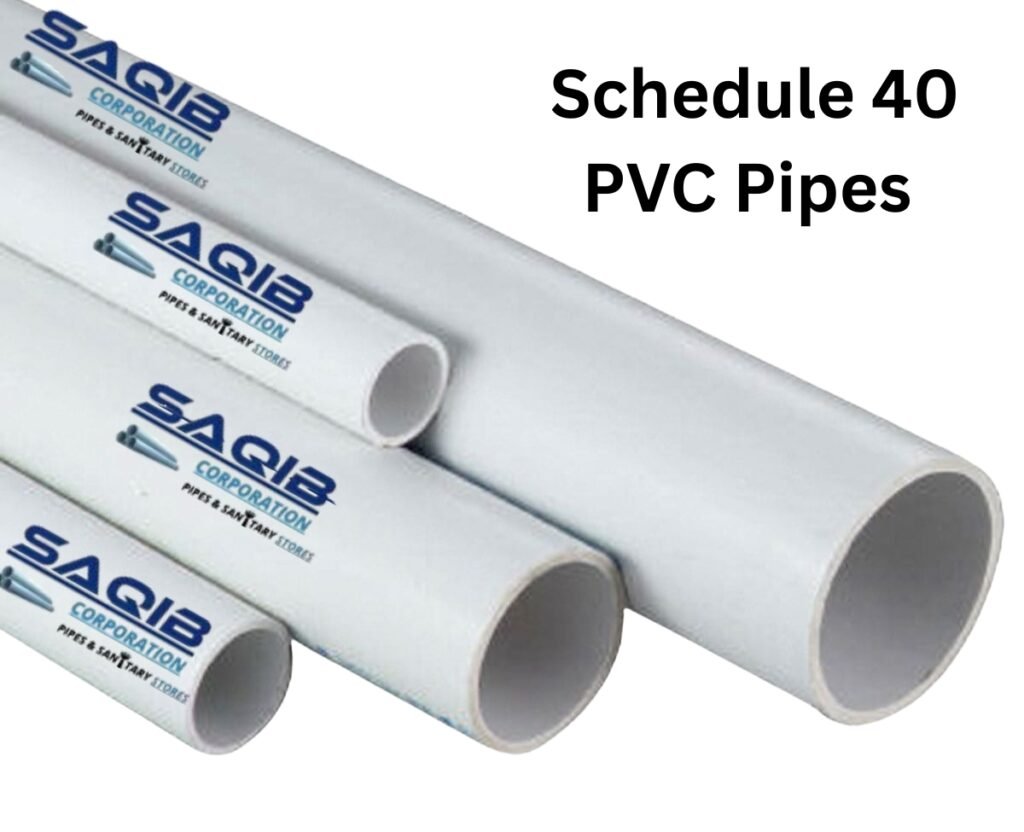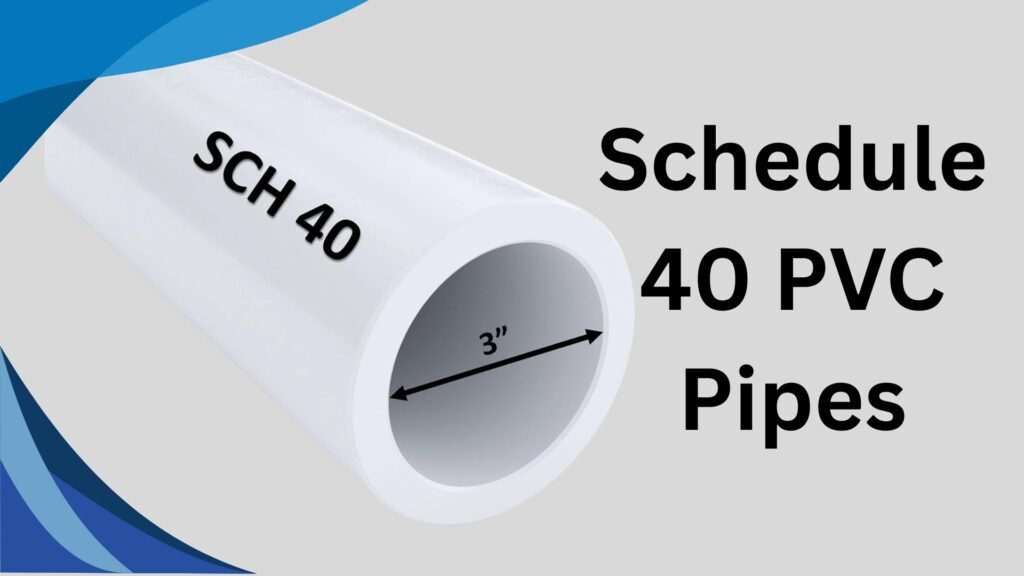Schedule 40 PVC pipes are widely used in various industries due to their durability, affordability, and chemical resistance. The term “Schedule 40” refers to the pipe’s wall thickness, which directly impacts its strength and pressure-handling capacity. Their versatility ensures they meet the needs of both residential and commercial projects.
Research shows that thicker walls handle higher pressure, while thinner ones suit low-pressure systems.. Previous studies also confirm their reliability in chemical resistance and long service life, making them a preferred choice for diverse applications. Schedule 40 PVC pipes offer a practical solution for medium-duty needs.
Their balance of affordability and performance makes them a trusted option. Whether for household plumbing or industrial use, these pipes deliver dependable results. Explore their benefits and make informed decisions for long-lasting systems. This guide provides a detailed exploration of Schedule 40 PVC pipe thickness, its characteristics, and practical applications.
What is Schedule 40 PVC Pipe?
Schedule 40 PVC pipes are a type of thermoplastic pipe known for their durability, affordability, and resistance to chemicals. The “Schedule 40” designation refers to the pipe’s wall thickness and, consequently, its pressure rating. These pipes are commonly used for water transportation, drainage systems, and other applications requiring reliable, lightweight piping solutions.
Key Features and Benefits of Schedule 40 PVC
- Lightweight Construction: Easy to transport and handle due to their lightweight.
- Chemical Resistance: Resistant to a wide range of acids, bases, and salts, making them suitable for industrial applications.
- Cost-Effective: Affordable compared to metal pipes, without compromising on functionality.
- Long Service Life: When properly maintained, they can last for decades.
These benefits underline why Schedule 40 PVC pipes are a staple in residential, commercial, and industrial installations.
Understanding Pipe Thickness: Why It Matters
The thickness of a pipe directly impacts its strength and pressure-handling capabilities. For PVC pipes, the wall thickness determines how much pressure the pipe can withstand without deforming or bursting. Thicker pipes are better suited for high-pressure applications, while thinner pipes work well for low-pressure uses. Proper pipe thickness selection ensures safety, efficiency, and longevity in systems, reducing the risk of failures and costly repairs.
Standard Thickness of Schedule 40 PVC Pipes
The thickness of Schedule 40 PVC pipes varies according to their nominal diameter. Smaller pipes have thinner walls compared to larger ones, maintaining a balance between wall strength and overall structural integrity. For instance:
- 1/2-inch pipe: Wall thickness of 0.109 inches
- 1-inch pipe: Wall thickness of 0.133 inches
- 2-inch pipe: Wall thickness of 0.154 inches
- 4-inch pipe: Wall thickness of 0.237 inches
Understanding these measurements helps you choose the right pipe size for your specific needs.

How to Measure PVC Pipe Thickness Accurately
Accurate measurement of PVC pipe thickness is critical for ensuring compatibility with fittings and determining pressure capacities. Follow these steps:
- Refer to Manufacturer Data: Cross-check your measurements with data provided by the manufacturer to confirm accuracy.
- Avoid Surface Irregularities: Ensure that measurements are taken on a smooth, even area of the pipe for consistency.
These steps prevent installation errors and enhance system safety.
Factors That Affect Pipe Thickness and Durability
Several factors can influence the thickness and durability of Schedule 40 PVC pipes:
Material Quality:
Low-quality materials may lead to inconsistent wall thickness and reduced durability.
Installation Conditions:
Improper handling or installation, such as overtightening fittings, can compromise the pipe’s integrity.
Being aware of these elements ensures proper use and longer service life for your PVC piping system.
Schedule 40 PVC Thickness Chart by Pipe Size
Here’s a quick reference chart for Schedule 40 PVC pipe wall thickness:
| Nominal Pipe Size (inches) | Outside Diameter (inches) | Wall Thickness (inches) |
| 1/2 | 0.840 | 0.109 |
| 3/4 | 1.050 | 0.113 |
| 1 | 1.315 | 0.133 |
| 2 | 2.375 | 0.154 |
| 4 | 4.500 | 0.237 |
This chart simplifies pipe selection during project planning.
Applications Where Thickness is Critical
The thickness of Schedule 40 PVC pipes plays a crucial role in their ability to withstand different stress levels. Critical applications include:
- Plumbing Systems: Thick walls assist in handling household water pressure.
- Irrigation: Ensures steady water flow without pipe deformation.
- Industrial Use: Manages chemical flow under controlled pressure.
- Construction: Supports temporary structures as conduits or protective covers.
Matching pipe thickness to the application ensures maximum performance.
Dimensions and Sizes: A Quick Overview
Standard diameters range from 1/2 inch to 24 inches, while lengths are typically 10 or 20 feet. Modular compatibility with fittings makes them versatile for custom systems.
Pressure Ratings and Durability
The pressure ratings for Schedule 40 PVC pipes depend on their diameter and operating conditions. For example:
- Smaller pipes (e.g., 1/2-inch) can handle up to 600 PSI.
- Larger pipes (e.g., 6-inch) are rated for up to 180 PSI.
Regular inspections and preventive measures ensure durability under these pressures.
Material Composition and Safety Standards
Schedule 40 PVC pipes are made from polyvinyl chloride (PVC), a safe material certified by international safety standards.
Installation Tips for Schedule 40 PVC Pipes
To achieve optimum performance during installation, follow these guidelines:
- Cut pipes cleanly with a PVC cutter for smooth edges.
- Allow joints to cure properly before applying pressure.
These tips improve system stability and reduce leak risks.
Maintenance and Longevity of Schedule 40 PVC
Proper maintenance extends the service life of Schedule 40 PVC pipes. Steps include:
- Periodic inspections for cracks or signs of wear.
- Regular cleaning to prevent clogs.
- Avoiding exposure to prolonged UV radiation.
Such practices ensure operational efficiency for years.
Comparing Schedule 40 Thickness with Other Schedules
Schedule 40 PVC pipes are thinner than Schedule 80 but thicker than Schedule 20.
Common Myths About PVC Pipe Thickness
Some myths about PVC pipe thickness need clarification:
- Thicker walls are always better.” Not always; thinner walls may be sufficient for low-pressure applications.
- “All PVC pipes are the same.” Schedule 40 differs significantly from other schedules in wall thickness and performance.
Understanding these distinctions helps in informed decision-making.
Choosing the Right Thickness for Your Project
Factors to consider when choosing pipe thickness include:
- Pressure Requirements: Higher pressure requires thicker walls.
- Flow Capacity: Thicker walls reduce internal diameter, affecting flow.
- Environmental Conditions: Aggressive environments may demand thicker walls for enhanced durability.
Careful selection prevents mismatched components.
Where to Buy Quality Schedule 40 PVC Pipes
Reputable suppliers and manufacturers provide quality Schedule 40 PVC pipes. Always choose certified products and consult with professionals for guidance. Trusted suppliers include local hardware stores and specialized industrial distributors.
Conclusion
Schedule 40 PVC pipe thickness is a vital factor in ensuring a piping system’s safety and efficiency. By understanding thickness specifications, selecting the right product, and following proper installation and maintenance protocols, you can achieve reliable, long-lasting systems. Whether tackling household plumbing or industrial projects, Schedule 40 PVC pipes provide unmatched versatility.

